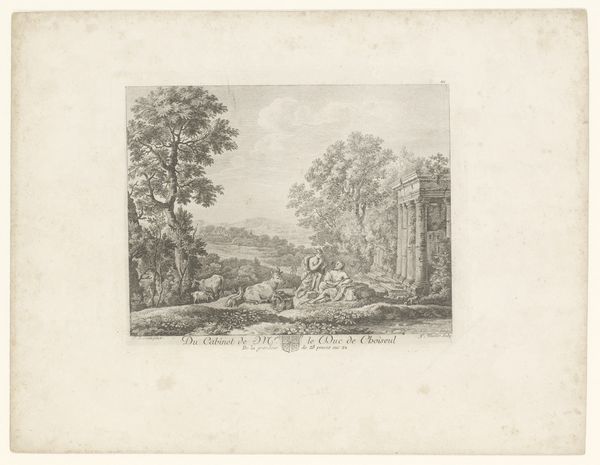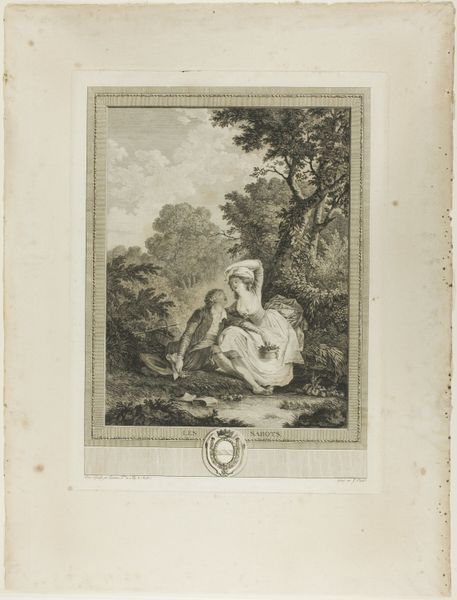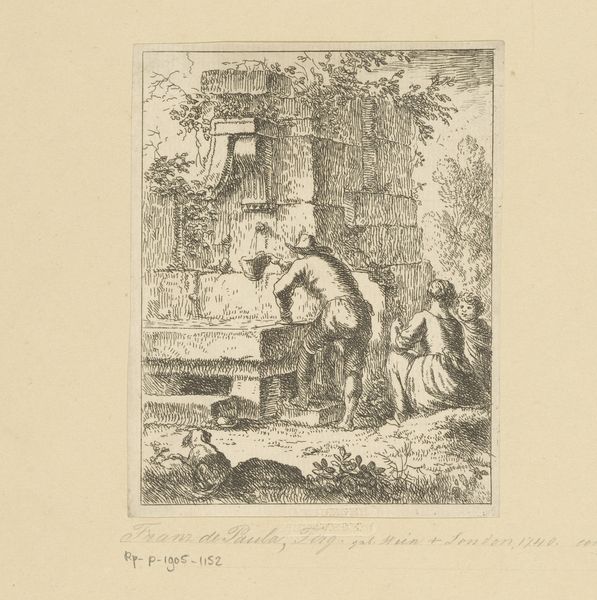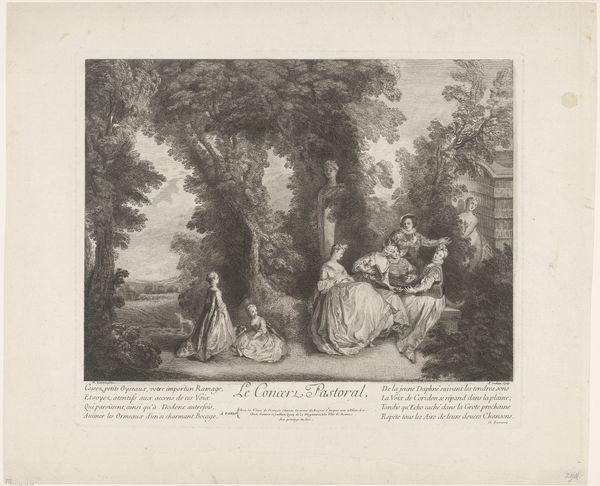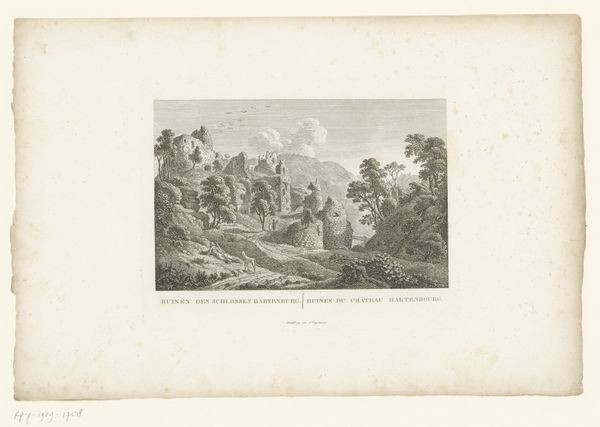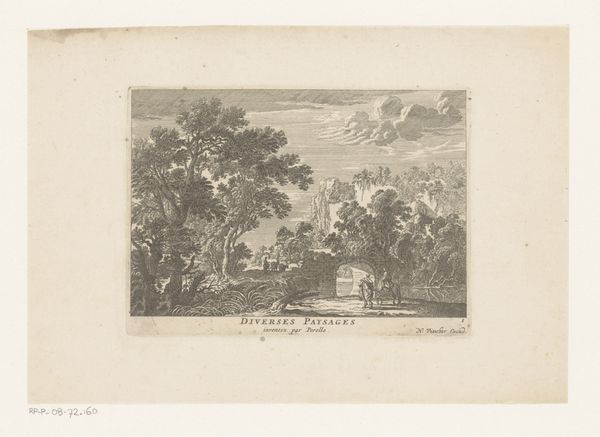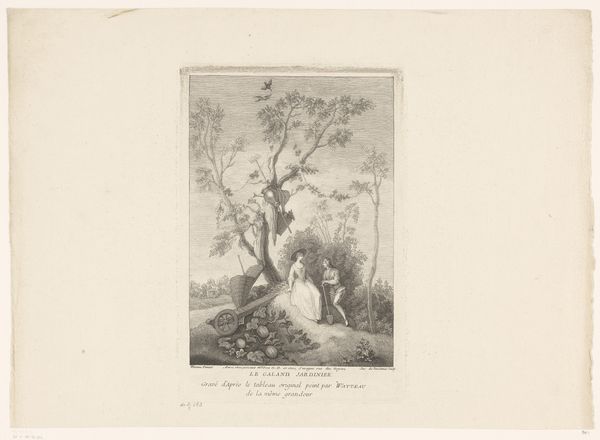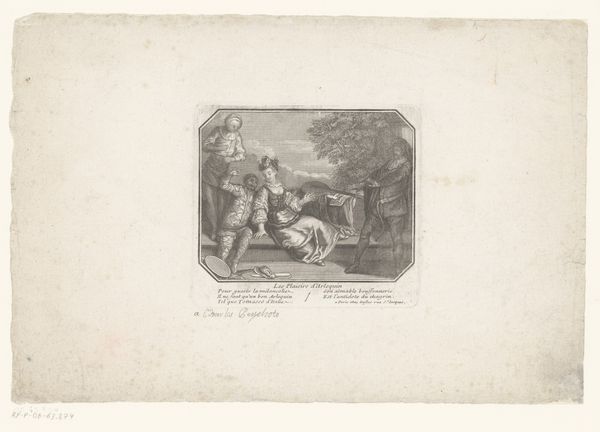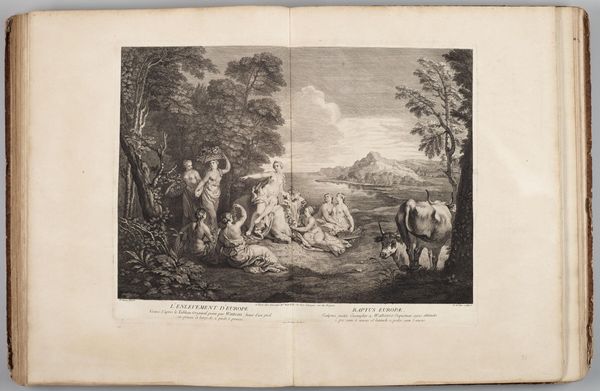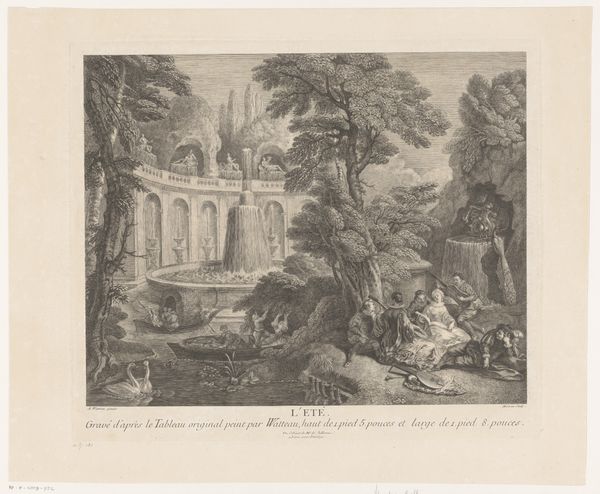
drawing, print, etching, paper, engraving
#
drawing
# print
#
etching
#
landscape
#
paper
#
history-painting
#
engraving
Dimensions: height 166 mm, width 195 mm
Copyright: Rijks Museum: Open Domain
Curator: This is "Phyllis en Demophon," an etching and engraving on paper made sometime between 1731 and 1788 by Johann Esaias Nilson, housed here at the Rijksmuseum. It has such a romantic and story-like quality, almost like a scene from a play. How would you interpret the work? Editor: Well, from a materialist perspective, I'm struck by the process. Look at the lines etched into the paper to create depth and shadow. What tools would Nilson have used to create such fine detail? The paper itself, what was its social context? Was it readily available or a luxury? Curator: That’s an interesting observation! Let’s consider the socioeconomic factors surrounding the creation of such a print. The labour involved, from the papermaking itself to the artist’s hand and the printing process. These things often get overlooked when we discuss 'art', wouldn't you agree? Was the availability of paper significant? And who was the audience? A print like this democratizes image making. Suddenly, owning art is accessible, not just for the elite. What would this do for social values? Editor: That's a fascinating point about accessibility. It challenges the traditional notion of 'high art' as something exclusive. It would require a change of taste and judgement to appreciate this form. And it certainly brings to mind broader themes of labour and class. How does the depiction of Phyllis and Demophon themselves play into that? Curator: Consider the depiction of labour – it is entirely absent. We are presented with the product, not the process, much like how a consumer sees a finished garment, detached from the sweatshop labor that produced it. Their idyll depends on unseen labor and materials, a reality effectively erased by the image itself. Perhaps Nilson, through the act of creating multiples, inadvertently exposes a new form of art consumption driven by broader economic forces. The rise of this form speaks to changes in both labour practices and consumption opportunities. It also allows the artist to move freely between 'craft' and the more established form of History Painting. It’s all quite interlinked. Editor: I hadn't considered it that way, the absences speaking as loudly as the presences. I will now be attentive to those elisions! Thanks for a great intervention! Curator: And thank you, I may now better direct my work from new and rewarding positions.
Comments
No comments
Be the first to comment and join the conversation on the ultimate creative platform.


